Malcolm Turnbull opens Sir John Monash Centre at Villers Villers-Bretonneux in France
MALCOLM Turnbull has emotionally reflected on his personal links to World War I as he opened the Sir John Monash Centre in Villers-Bretonneux, France on the eve of Anzac Day.
News
Don't miss out on the headlines from News. Followed categories will be added to My News.
MALCOLM Turnbull was emotional as he reflected on the death of his wife Lucy’s great uncle who died five days of arriving on banks of the River Somme in 1916.
Opening the Sir John Monash Centre at Villers Villers-Bretonneux, the Prime Minister captured guests with his own connections to WWI and so many Australians who died on battlefields.
RELATED: Unsung women’s sacrifice remembered

He paid tribute to Tony Abbott, who was in the audience, and invested in the Sir John Monash Centre when prime minister.
“This afternoon Lucy and I stopped at the grave of Lucy’s great uncle, Roger Forrest Hughes,” Mr Abbott said.
BRAVERY: Aussie troops continue the Anzac story

“Newly married, a young doctor, and a resident, at St Vincent’s Hospital, Roger enlisted in the AIF in 1916.
“Within five days of arriving on banks of the River Somme he was hit by a shell while treating a wounded digger.

“Roger died at the age of 26 in the arms of his brother, the fighter ace Flt Lt Geoffrey Hughes whose squadron was nearby.
“Seven weeks later Roger’s wife, Eileen Maher, gave birth to their son.”
Earlier, Mr Turnbull and French Prime Minister Édouard Charles Philippe paid tribute at the tomb of Lance corporal Vivian George Taylor.

For almost a century, the Lance corporal was another unknown Australian soldier in an isolated grave near Villers-Bretonneux.
Last year, he was identified — no longer nameless, no longer a hero with a headstone that read an “Australian soldier of the Great War”.
He was identified by Australian researchers, always determined to find an Unknown Soldier a name, a family and respect deserved.
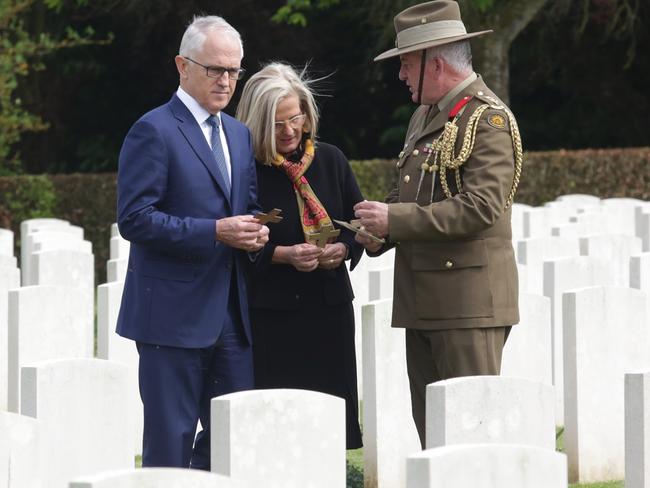
The Lance corporal Vivian George Taylor died in the aftermath battle of Le Hamel on July 1918.
Mr Turnbull, who will attend dawn service in Villers-Bretonneux on Anzac Day, said it was a commemoration of the human spirit, not of war.
“Australians are hardly militaristic — tomorrow, Anzac Day, does not commemorate a military victory. The Gallipoli campaign was a tragic and costly failure.
“So we honour instead a triumph of the human spirit; courage, solidarity, resilience and above all mateship.
“But while we are never triumphalist, we should never forget the triumphs of arms won by the Australian forces in the midst of all the horrors of the Great War.
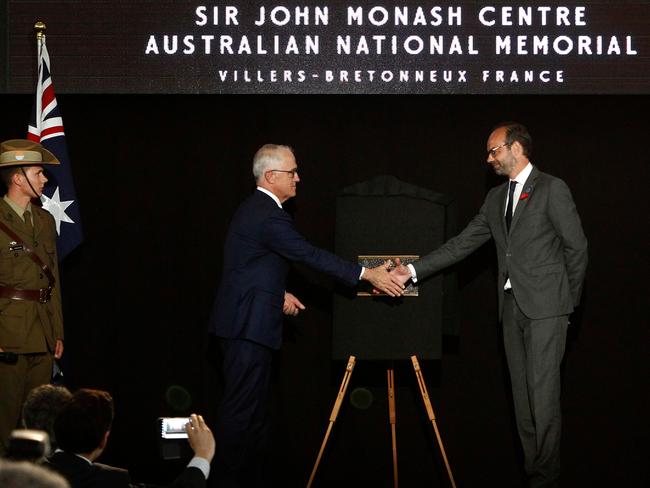
And here at the village of Villers-Bretonneux — exactly one century ago — with that ANZAC spirit and the brilliant leadership of John Monash the Australian forces won a momentous victory — the first of many in 1918.
“On their second attempt the Germans captured Villers-Bretonneux on 24 April, but in an assault which Monash later described as “the real turning point of the war” the 13th and 15th Australian Brigades recaptured the town in the early hours of ANZAC Day 1918 and ensured the Germans could not achieve their objective, the capture of Amiens and its vital railway hub.”
He said Monash was a man of meticulous planning.
“Brigadier General Pompey Elliott worked with instinct and passion, and together they launched the brilliant and ruthless counter attack that broke the German onslaught and helped to turn the tide of Europe’s deadliest war.
“From here, it seems there was nothing Monash could not do.
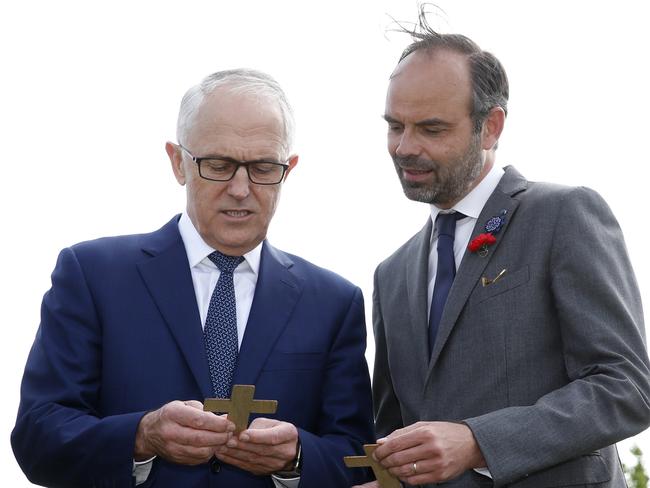
“In May 1918 he was given command of the entire Australian Corps — the first time they had been led by an Australian.
“Monash was above all a modern man, an engineer, also legally trained, a lateral, creative thinker — as literate as he was numerate. Before the War he made a fortune deploying the latest Monier system of reinforced concrete construction.
“We see him in his khakis bewhiskered and stern as Generals were, but to think of Monash in our time, think of a man at the cutting edge of technology, pushing the boundaries of imagination and innovation.”
FRANCE PAYS TRIBUTE TO AUSTRALIAN SACRIFICE
French Prime Minister Édouard Philippe provided a moving and extraordinary heartfelt speech at the opening of the Sir John Monash Centre overnight at Villers-Bretonneux.
Australians in the audience were moved by the brutal honesty of war and what it would have been like dying in a foreign land.
““Coming here, seeing this centre and tour, looking at the names of the 11,000 Australians who died for France and for freedom, I could not help thinking of the terrible loneliness which these thousands of young Australians must have felt as their young lives were cut short in a foreign country,” he said.
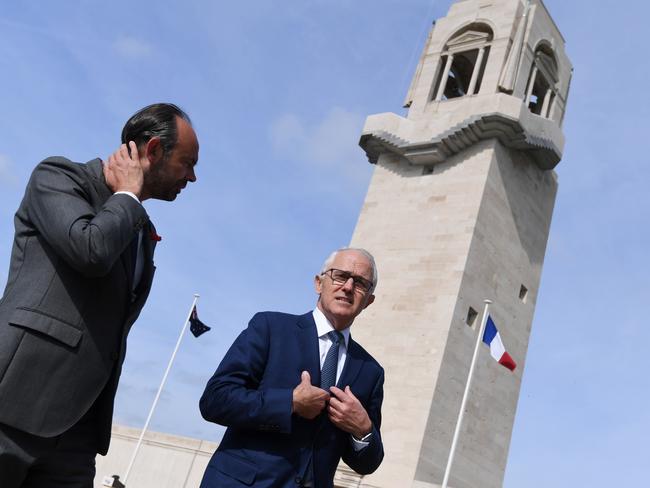
“A foreign country. A faraway country. A cold country whose earth had neither the colour nor texture of their native bush. A faraway, foreign country which they defended, inch by inch, in Fromelles in the Nord region, in Bullecourt in Pas-de-Calais and of course here, in Villers-Bretonneux. As if it were their own country. And it is their own country. “The earth is more important to the soldier than to anybody else,” continues Erich Maria Remarque, “the earth is his only friend, his brother, his mother. He groans out his terror and screams into its silence and safety”. For many young Australians, this earth was their final safe place. For many of them, this earth was the final confidante of a thought or a word intended for a “loved one from the other side of the world”. Loved ones who would only learn the sad news several months later.
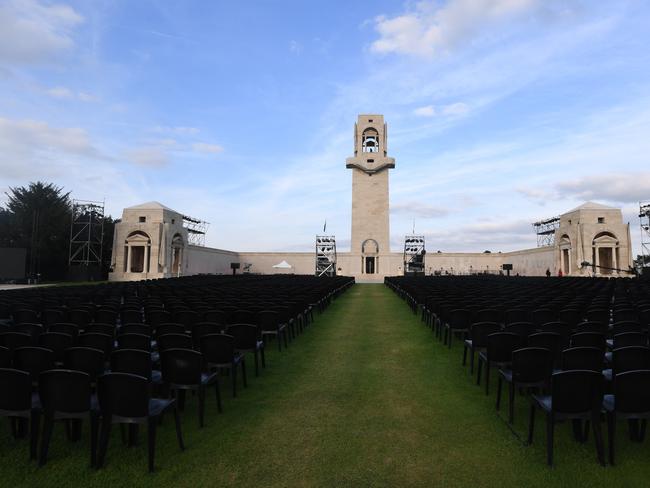
“Prime Minister, as a keen student of history, I can tell you: it is rare to turn the tide of a battle. And even rarer to do so twice in quick succession. The first time was right here, on 24 April 1918. The Germans wanted to finish things off. In a letter to his wife in January 1918, Australian Brigadier General Harold Elliott, known as “Pompey”, wrote: “The enemy are sending all the best men from the Russian front, and any prisoners we get are full of tales of the preparations the Bosche are making to settle us for good this time.” One of the goals was to take Amiens. To get there, they had to pass through Villers-Bretonneux. On the 17th, it was raining shellfire. The Australian troops stood firm. In fact, they went one better because on the 24th, at 10 p.m., with the help of the British, they counter-attacked. After the fiercest of battles, parts of which took place on the very site of the memorial, they repelled the Germans and went down in history.
Originally published as Malcolm Turnbull opens Sir John Monash Centre at Villers Villers-Bretonneux in France
